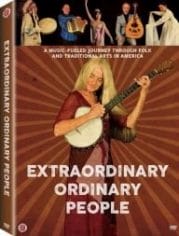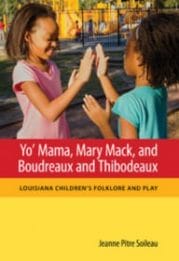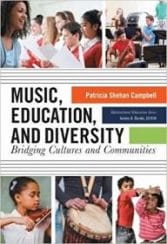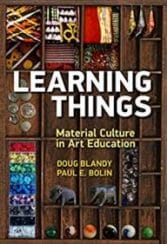 Extraordinary Ordinary People: A Music-Fueled Journey through Folk and Traditional Arts in America, by Alan Govenar
Extraordinary Ordinary People: A Music-Fueled Journey through Folk and Traditional Arts in America, by Alan Govenar
(2017. 84 minutes. DVD format, color, includes extras: five short films and portrait portfolio. Documentary Arts, Dallas, TX.)
Timothy H. Evans is Associate Professor of Folk Studies, Department of Folk Studies and Anthropology, Western Kentucky University.
The National Heritage Fellowships have been awarded to folk and traditional artists by the National Endowment for the Arts (NEA) every year since 1982, to “recognize the recipients’ artistic excellence and support their continuing contributions to our nation’s traditional arts heritage” (NEA National Heritage Fellowships, 2019). Extraordinary Ordinary People is a celebration of the artists honored by the Fellowships. Much of it was filmed at the 2015 National Heritage Fellowships concert (the annual awards ceremony) in Washington, DC, but it also includes footage of artists going back to the first year of the award. The film is directed by Alan Govenar and co-written by Govenar and Jason Johnson-Spinos, who also edited it.
Beginning with several definitions of “tradition,” the film surveys dozens of traditional artists, generally grouped by genre or style (bluegrass, blues, conjunto music, baskets, quilts, etc.), interspersed with longer interviews with artists such as oud master Rahim AlHaj, circus aerialist Dolly Jacobs, and especially North Carolina balladeer and banjo player Sheila Kay Adams, who also narrates the film (along with Elva Perez). The longer interviews nicely convey the importance of narrative to the artists in presenting themselves and their art, as well as many details about their art forms.
The film also explores the history and goals of the Fellowships through interviews with the late Bess Lomax Hawes (former NEA Folk and Traditional Arts Director and creator of the Fellowships) and, especially, with Dan Sheehy, winner of the 2015 Bess Lomax Hawes Award for the preservation and awareness of cultural heritage (awarded annually as part of the National Heritage Fellowships). Sheehy, an ethnomusicologist, is former director of NEA Folk and Traditional Arts, the Smithsonian Center for Folklife and Cultural Heritage, and Smithsonian Folkways Recordings.
The film looks briefly at several political and cultural issues surrounding folk and traditional artists: the impact of immigrant and refugee experiences on the maintenance of traditional arts; the impact of language and language loss, especially with Native arts; the lack of recognition and financial compensation for many traditional artists; the role of art in surviving and healing; the passing of traditions to the next generation; the simultaneously conservative and dynamic nature of most traditional art forms; and the ways that traditional artists must adapt to new technology, new modes of communication, and changing social norms. All these issues are explored through interviews with artists.
The film emphasizes music and dance and, inevitably, explores only a slice of the hundreds of art forms of National Heritage Fellows, but it still manages to survey a great variety of art forms, from mariachi music to Orthodox icon making, to straw weaving, boat building, rockabilly, bobbin lace making, retablo making, Korean and Cambodian traditional dancing, Peking opera, capoeira, Nez Perce and Tolowa singing, and many others. The film is beautiful, multi-sensual, exciting, thought provoking, and often moving. As diverse as the artists are, they have in common an intense passion and commitment to their art forms. Although the film touches just briefly on specific art forms and artists, it compels the viewer to learn more. As I watched, I paused it frequently to look up more information on the artists and their traditions.
The DVD includes five short films, mostly interview excerpts, and a portfolio of portraits of some of the Heritage Fellows. It does not come with any materials directly intended for classroom use. However, the Masters of Traditional Arts website includes photos, audio, and video of over 400 Fellows as well as an education guide by Paddy Bowman, with lesson plans and activities. (Unfortunately, there is no mention of this site anywhere on the DVD package.) Even without the online materials, the film (or excerpts from the film) could definitely be used in the classroom to illustrate the incredible variety and beauty of folk and traditional arts in the U.S. It is easy to imagine activities based on the film–for example, having students choose an art form from the film that interests them and create a research paper, class presentation, or creative project centering on that art form. Such activities would enrich curricula in art, culture, and history, among other subject areas.
The DVD can be ordered through Documentary Arts or First Run Features, and it can be downloaded from iTunes.
URLs
https://www.arts.gov/honors/heritage
www.mastersoftraditonalarts.org
 Folkstreams (https://www.folkstreams.net)
Folkstreams (https://www.folkstreams.net)
Virginia Siegel is Folk Arts Coordinator at Arkansas Folk and Traditional Arts.
For nearly two decades, Folkstreams has held a reputation as the go-to resource for viewing and browsing ethnographic films online. The website, founded by Tom Davenport, is now managed as a 501(c)3 organization headed by Davenport and staff and advised by a committee of distinguished folklorists and scholars. The growth of this site is clear; over the last several years, it has experienced a significant design overhaul. Many features remain consistent, but the site is now sleek, easy to navigate, and visually appealing as a searchable resource.
While visiting the main page of Folkstreams, a large banner image that changes with each new visit to the site greets viewers. The main navigation menu at the top features the opportunity to browse films by title, filmmakers, or search bar. Additionally, from the top navigation, viewers can learn more about Folkstreams history, the rights of the films available on Folkstreams, and how to contact and donate to the organization.
Folkstreams is a remarkably searchable website. Browsing film titles by name, the viewer has the option to filter titles by category or region, as well as sort alphabetically or by the date they were added to the database. Search results appear as a grid of thumbnail images with title, date, and film length. When the viewer hovers the mouse over the film images, brief summaries appear without having to navigate to a new page. Upon clicking on a film, the viewer can watch the film, learn more about the production crew and licensing of content, and even browse related films on the lower right side.
When browsing films by filmmaker alphabetically, a particularly savvy feature is the way that each filmmaker’s complete body of work on Folkstreams is listed immediately below their name in the filmmaker index. If a viewer is a fan of a particular film, they will immediately be able to see other content by that filmmaker. If one is looking to browse more casually, the homepage offers the option to view featured films and popular categories of films. If a viewer would like to search by specific term, the search bar is highly responsive; the results for a search go beyond the titles or categories of videos to scan the descriptions of each video for keywords.
Folkstreams maintains a strong commitment to education, with the bottom navigation reflecting the website’s intended audiences, including educators, community members, families, and users looking to learn more about video preservation. For educators, a portal developed by Paddy Bowman features a variety of lessons and worksheets to accompany several films. While this section might appear limited in content with only four film-specific guides, advice is given for adapting these plans to a wider variety of films. The worksheets are highly adaptable. For example, the Film Analysis Framework worksheet helps viewers analyze content from any film through a variety of pre-viewing, viewing, and post-viewing tasks. Viewers are asked to look for specific elements in a film, such as narrator, setting, techniques, vocabulary, and symbols, to name a few.
For community and family audiences, Folkstreams offers a resource page that encourages the use of Folkstreams videos to bring intergenerational groups together and spark dialogue. This page offers a variety of topics (framed as questions) to kick-start these conversations. The page links to further resources, including Louisiana Voices and the Veterans History Project at the American Folklife Center.
Lastly, the bottom navigation menu features a tab on video preservation, which, although small and unassuming, links to a robust database of video demonstrations on a variety of topics related to motion picture preservation and restoration. Although this appears like a separate site visually, this page is also created and maintained by Folkstreams. Topics range from film repair and cleaning to disaster planning and storage. The videos supplement aids that already exist on the linked National Film Preservation Foundation’s Guide to Film Preservation.
In all, Folkstreams’ growing site has tremendous educational potential for a variety of contexts. The website is approachable, fun to explore, and rich with resources. Educators should note that Folkstreams emphasizes that the films are limited to home use. Film rights remain an omnipresent theme on the site. Rights appears as a category both in the top and bottom navigations, and the page indicates that users who wish to stream in classrooms/institutions must apply to Folkstreams or the filmmaker. This holds true for users wishing to use footage in projects as well. Alongside the educational resources, Folkstreams’ commitment to showcasing and crediting the hard work of folklorists and scholars remains part of the mission and legacy of this project.
URLs
Film Analysis worksheet and other education tools: https://www.folkstreams.net/educators.php
 Yo’Mama, Mary Mack, and Boudreau and Thibodeaux: Louisiana Children’s Folklore and Play, by Jeanne Pitre Soileau
Yo’Mama, Mary Mack, and Boudreau and Thibodeaux: Louisiana Children’s Folklore and Play, by Jeanne Pitre Soileau
(Jackson: University Press of Mississippi. 2016, xi +193 pp, appendices, notes, index.)
Nic Hartmann currently serves as both the Director of Learning & Civic Engagement at the National Czech & Slovak Museum & Library and an Adjunct Professor of Leadership Studies at Mount Mercy University.
In Yo’ Mama, Mary Mack, and Boudreau and Thibodeaux: Louisiana Children’s Folklore and Play, author, educator, and folklorist Jeanne Pitre Soileau presents an analysis of over four decades of fieldwork on southern Louisiana children’s games. Soileau’s work as an educator gave her extensive opportunities to collect recordings from children from around the state, and this book highlights the vast variety of verbal and play-based lore that comes from these communities. Looking at children’s folklore as an example of ephemeral art that serves as one of the “most treasured outlets for artistic expression,” Soileau emphasizes how this folklife has served as a constant for African American children over the last several decades, whether in facing the backlash of integration, responding to the issues of busing, or coping with other contemporary issues related to African American life.
Soileau’s collection adds to the rich collection of African American children’s folklife not only by displaying the rich regional collection of Louisiana folklife, but also by emphasizing the role of girls’ play as being equally present, yet not nearly as researched among historical folklorists. Rather than looking at the media, and the rise of electronic devices, as a negative presence set to reduce the role of children’s folklore, Soileau heavily discusses their importance in her chapters, “The African-American Child in the Media” and “To Infinity and Beyond: Children’s Play in the Electronic Age.” Readers get a strong idea of the evolution of children’s play and the methods of Soileau herself, who goes from playgrounds to school anime clubs over the course of 44 years of research. This is just as much a study of her life as a folklorist as it is the people she examines, and the evolution of her work over time is very evident in the text. It’s part ethnography and part autobiography, which work well together.
While the book is well organized into four basic sections—one each for the study of boys’ and girls’ play and the others to examine media and technology, respectively—there is more to the book than those theoretical analyses and examples. Rather than lament technology as a distraction from the cultural creation process, Soileau’s book actually embraces it, which makes it a better model for educators to understand better how to embrace technological innovation and its effects on youth. Some of the richest materials come from her appendices, which feature recent examples of fieldwork in various formats and make the book’s purpose stronger. It is a solid resource for educators, both inside and outside the classroom, that gives an idea of how a fieldwork session can operate and how educators can engage children in the fieldwork process. It is just about analysis but also about how folklorists engage with youth and how they can do so in a way that sparks creativity. Over the years, Soileau has succeeded in doing so, and her collection is both vital to the study of children’s folklore and the study of folklore and education.
 Music, Education, and Diversity: Bridging Cultures and Communities, by Patricia Shehan Campbell
Music, Education, and Diversity: Bridging Cultures and Communities, by Patricia Shehan Campbell
(Teachers College Press, 2018, 214 pp.)
Lynne Hamer holds a PhD in Folklore from Indiana University and is Professor of Social Foundations of Education in the Judith Herb College of Education, University of Toledo. At UT, she coordinates Teach Toledo, an initiative to diversify the teaching profession through supporting urban citizens to become licensed teachers, and teaches graduate and undergraduate courses including “Schooling and Democratic Society.”
In this accessible monograph on the intersection of music education and ethnomusicology, Campbell uses her “half-century’s work as a teaching musician, a card-carrying music educator,” and an ethnomusicologist to explain music education in the U.S. as lagging behind larger societal shifts toward multiculturalism and social justice but as having promise. In doing so, she demonstrates the usefulness of ethnomusicological approaches and materials for multicultural education as well as the utility of contemporary social justice and multicultural education scholarship for ethnomusicologists and folklorists working in schools and teacher education. The book should be required reading in music teacher education programs and in applied folklore courses as it helps explain needed developments in music education today while also revealing the kind of theoretically-informed work that ethnomusicologists and folklorists need to do for our work to be relevant in the broader society.
Campbell is an accomplished and prolific scholar, having authored seven books and many articles, and edited several handbooks, including a recent seven-volume series on World Music Pedagogy for use by teachers and in teacher education (https://www.routledge.com/music/series/WMP). Music, Education, and Diversity has eight chapters, two of which are adapted from Campbell’s entries in the Encyclopedia of Diversity in Education (2012) and The Oxford Handbook of Social Justice in Education (2015). Throughout, Campbell uses the trope of herself as “musical artefact,” inserting personal experience narratives that allow her to reflect on her “sense of connections between musical power and cultural equity” and to share her firsthand observations of the diversification of music education programs as well as the challenges that have kept them predominantly monocultural.
The first four chapters give the big picture of “musical engagement as human need” (chapter 1), “the changing nature of school music” (chapter 2), “educational intersections of ethnomusicological ideals” (chapter 3), and “multicultural education and social justice in school music practice” (chapter 4). Music is a “pan-human phenomenon” but without a “universal language”: it must be understood in context and is grounded in the home. Musicking is not object but action and process, and music educators should focus on “living musical-cultural experience.” All people deserve music in their lives as a right rather than a privilege. The question is whose music will be included in the curriculum as official knowledge.
Campbell answers that question through a literature review of how school music has been conceptualized, from its Anglocentric roots to the present ongoing expansion into global and local musicking, starting with UNESCO’s International Music Council in 1953. She reviews “crossover scholarship” by ethnomusicologists working in music education and music educators using ethnomusicology. Campbell identifies the persistence of a “19th-century conservatory model” in higher education, including teacher education, as thwarting inclusion of global and local musicking. But she also introduces social justice and multicultural education approaches, illustrated by exemplary music education in practice, and concludes that music educators are increasingly paying attention to equity and social action, “leading [their students] toward the socially responsible citizens they will become.”
Campbell’s last four chapters drill into specific pedagogical concepts and techniques, and it is in these that the reader finds the application of core folkloristic and ethnomusicological concepts: “transmission, teaching, and learning” (chapter 5), “world music pedagogy as learning pathway” (chapter 6), “connections with communities and culture bearers” (chapter 7), and “principles of diversity in school music practice” (chapter 8).
For music teacher educators, Music, Education, and Diversity provides a blueprint for diversifying the curriculum to catch up to the 21st century. It could be the main text used in undergraduate or graduate introduction to music education courses and should not be relegated to a specialty course on multicultural education.
For ethnomusicologists and folklorists working in education, Music, Education, and Diversity provides an excellent lesson in how to use folklore for democratic, multicultural, social justice education while maintaining a focus on key folk processes. As part of the Multicultural Education Series edited by James A. Banks, the book illustrates how to operationalize Banks’s five dimensions of multicultural education (content integration, knowledge construction, prejudice reduction, equity pedagogy, and empowering school culture) as well as his four levels of curricular reform (contributions, additive, transformation, and social action). Framing folkloristic materials and methods in canonical educational practice allows for teachers and teacher educators to understand the power of global and local materials and processes.
 Learning Things: Material Culture in Art Education, by Doug Blandy and Paul E. Bolin
Learning Things: Material Culture in Art Education, by Doug Blandy and Paul E. Bolin
(New York: Teachers College Press, 2018, 133 pp.)
Suzanne Godby Ingalsbe holds a PhD in Folklore and a Master of Library Science degree from Indiana University. She is Associate Director of Indiana University’s Institute for Advanced Study.
In their cleverly titled volume, repeat collaborators Doug Blandy and Paul E. Bolin offer a brief overview and introduction to material culture studies and outline a case for including material culture studies topics and techniques in art education. While ostensibly for an audience of art educators, the book may serve as a useful quick start guide for anyone looking to orient themselves in the interdisciplinary landscape of material culture studies, whether seeking to enhance their own research or to plan activities for students.
The book is organized into seven accessible chapters plus an introduction and list of selected readings for further exploration. The first chapter offers an overview of material culture and material culture studies, situates those in comparison with—and potential inclusion in—art education, and outlines 12 key ideas such as the interdisciplinarity of material culture studies, the inherently political nature of material culture, and the multi-directional connections between things and stories. The following chapters elaborate on these ideas through slightly expanded discussions of objects and stories; collecting and collections; objects and links between people, places, and times; technology and material culture; multisensory engagement; and specific techniques for teaching and studying material culture.
Theoretical treatment is light, contained to succinct mentions of some key figures and perspectives. The bulk of the text is devoted to descriptions of various categories of material culture, examples of what may be learned through examination of objects, and explication of “how to” methodologies for closer consideration of those things and topics. Miniature case studies drawn from the authors’ experiences are sprinkled throughout, grounding the work in easily grasped concrete examples.
The majority of the techniques presented would be quite effective in undergraduate curriculum, either as standalone activities or as part of a course-wide (or multi-course series) focus on the study of one or more types of material culture and/or research methodologies. These approaches would also work well in museum, archive, or library education settings, whether for single-visit audiences or as part of continuing education offerings. The strategies might well prove fruitful, too, for scholars planning cross-disciplinary collaborations.
Some of the activities, such as the “Who Made That?” exercise or object-linked storytelling, also could be used with students as young as Kindergarten, perhaps with slight adaptation. Indeed, the show and tell/show and share time that is commonly part of elementary school experience already touches in a simple way on some key points of interest to the material culture scholar, and variants of some of the book’s other approaches have been incorporated, at least in part, into instructional exercises for elementary through high school students. Material culture can be a lens through which to focus on any topic, and the activities suggested by the authors pair nicely with the structure of existing academic standards.
It is worth revisiting the authors’ aim of providing a “motivational catalyst” (p. 5) for art educators to include material culture studies as part of their teaching. Blandy and Bolin do a respectable job of laying out what can be learned through material culture studies, with some notable focus on linkages between people, processes, worldview, and objects. It does not take a huge feat of imagination, however, to think that some scholars might not be persuaded to stretch what have been the conventional boundaries of their purview to take on these expanded considerations. The authors’ argument that may be hardest to dismiss is that, unlike approaches that privilege the visual, material culture studies lend themselves to including and accommodating individuals with visual or other sensory impairments, since material culture engages all the senses. This inclusiveness is noteworthy.
The authors reiterate material culture studies’ interdisciplinary nature at several points. Their streamlined format does not allow extended discussion of the differences between disciplinary orientations or techniques, however, so readers interested in such details will need to do additional research. Even included models are not always linked to their disciplinary background. The “Selected Books” are a thoughtful gesture toward this, although I wonder whether an author-alphabetized list is the most helpful presentation. Perhaps organization by topic or discipline might be more useful to newcomers to this subject, or to those looking to make connections outside their own disciplines. An online resource searchable by multiple fields would be a welcome companion tool to Learning Things. All told, though, this volume provides a good jumping off point, offering a wide enough range of readings, curriculum ideas, and additional resources to solidly launch early forays into studying material culture.

 Extraordinary Ordinary People: A Music-Fueled Journey through Folk and Traditional Arts in America, by Alan Govenar
Extraordinary Ordinary People: A Music-Fueled Journey through Folk and Traditional Arts in America, by Alan Govenar Folkstreams (
Folkstreams ( Yo’Mama, Mary Mack, and Boudreau and Thibodeaux: Louisiana Children’s Folklore and Play, by Jeanne Pitre Soileau
Yo’Mama, Mary Mack, and Boudreau and Thibodeaux: Louisiana Children’s Folklore and Play, by Jeanne Pitre Soileau Music, Education, and Diversity: Bridging Cultures and Communities, by Patricia Shehan Campbell
Music, Education, and Diversity: Bridging Cultures and Communities, by Patricia Shehan Campbell Learning Things: Material Culture in Art Education, by Doug Blandy and Paul E. Bolin
Learning Things: Material Culture in Art Education, by Doug Blandy and Paul E. Bolin